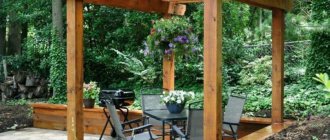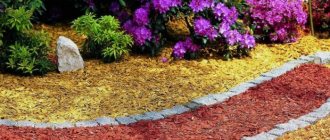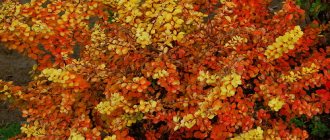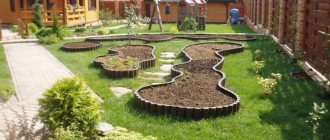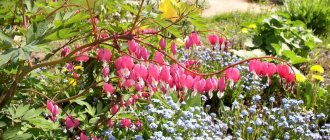Barberry is a universal plant that is used by landscape designers to realize the most daring ideas. Currently, this colorful shrub is at the peak of popularity: not a single private or municipal landscaping project takes place without barberry.
Barberry, the types and varieties of which are surprisingly diverse, can cope with any task. If you want an impregnable hedge, or buy a bright tapeworm, or maybe you are putting together a composition and looking for something unique for your mixborder - in any case, we advise you to take a closer look at barberry. Barberry is a shrub or small tree that rarely grows more than 4 meters in height. All its branches are covered with thorns, so when planting and caring for the seedling, be careful and wear gloves. The most commonly found barberries in nurseries are Thunberg and Ottawa barberries, which are considered the most decorative.
What is barberry - some facts
The common barberry species is part of the genus Berberis, the tribe Berberideae, the subfamily Berberidoideae, the family Berberidaceae, the order Ranunculales. The first description was made, in the form of a botanical illustration, in the book OB Tome Flora von Deutschland, Osterreich und der Schweiz, 1885.
Barberry has taken its place in landscape design long ago and firmly. Since the emergence of the first man-made gardens of Babylon, thanks to its decorative properties and unpretentiousness, it has become their indispensable attribute and has retained its popularity in the landscape architecture of our time.
It was known long before it received scientific classification. According to legend, it borrowed its name from the Arabic “berbery” - shell, due to the similarity of flower petals with mollusk valves. It was actively used in folk medicine of ancient India and other countries in the plant’s distribution zone. Healing properties were attributed to flowers, leaves and honey from barberry.
Barberry berries Source img-fotki.yandex.ru
The habitat of the common barberry (Berberis vulgaris), before it became widespread, was limited to East Asia, some areas of the forest-steppe zone of Transcaucasia and southern Europe. The plant is light-loving and chooses appropriate places for its natural habitat: edges, lawns, mountain slopes, rising to a height of up to 2,000 m.
How to preserve seedlings before planting
Seedlings appear on the shelves of supermarkets or gardening centers in January-February. Planting a plant during this period is not possible for most regions. The exception is Crimea, where shoots begin to bloom at this time. However, even if you buy a bush at such an inappropriate time for planting, you can keep the seedlings alive and healthy.
- After purchasing, remove part of the wrapping paper covering the branches from the seedling.
- The roots of the plant are left in the package.
- The seedling storage temperature should not exceed 3°C. This is the temperature regime at which the plant hibernates. You can store seedlings on an unheated balcony. The plant can also be placed on the bottom shelf in the refrigerator, intended for storing vegetables and fruits.
- If the purchased seedling has leaves, it must be planted in a container and grown as a houseplant. The air temperature in the room should not exceed 22–25°C.
If the seedling has leaves, it is planted in a pot and grown as a houseplant
Popular barberry varieties for landscape design
- Barberry thunberg Golden Ring.
Golden ring is one of the most decorative varieties of barberry Source zp31.ru
The bush is round in shape, reaches a height of 2.5 m. The leaves are coral-colored with a golden border around the circumference. It blooms in May with yellow flowers with a red center that harmonizes with the color of the foliage. September, October is the period of ripening and coloring of berries in bright red color. This is perhaps the most decorative barberry in landscape design.
- Barberry thunberg Green Carpet.
Thunberg barberry Green Carpet is used as a ground cover plant in combination with other varieties Source ua.all.biz
Mature trees reach a height of 1 m, the foliage is uniformly colored bright green. Bright red flowers with a yellow core bloom in May, turning into glossy red berries in September that remain on the bush all winter. In autumn, the foliage takes on an orange-red hue.
- Barberry thunberg Atropurpurea Nana.
Thunberg barberry Atropurpurea Nana as a tapeworm Source 2gis.com
The shrub has a dense crown up to 1 m high. Throughout the season, the foliage has a soft purple color, becoming brighter and darker in the fall. It blooms profusely in May with small red flowers with a yellow core, which turn into crimson berries in the autumn.
- Barberry thunberga Atropurpurea.
Thunberg barberry Atropurpurea as a dominant in a solitaire composition Source avatars.mds.yandex.net
The crown is dense and spreading, 1.5 m high. The foliage, like the previous variety, is purple in color. May flowering adds bright yellow color to the palette. One of the varieties suitable for hedges, but requires regular pruning.
- Barberry thunberg Red Rocket.
Thunberg barberry Red Rocket in a flowerbed Source radikal.ru
The name “red rocket” was given for the beautiful elongated spicate shape of the crown, which wears a crimson color all season, and in the fall, as if mocking nature, its leaves turn green. The height reaches 2 m, and the diameter of adult specimens can exceed 6 m; this must be taken into account when choosing a planting site. Abundant flowering begins in May; by autumn, the red berries characteristic of the family are formed.
- Barberry thunberga Darts Red Lady.
Thunberg barberry Darts Red Ledy changes color Source agro-ra.ru
A compact variety of barberry with a dense crown, the height of adult plants does not exceed 80 cm. The leaves are purple and, thanks to the glossy surface, in sunlight from different angles change shade from crimson to brown, turning bright in the fall. orange. Flowering begins in May and lasts throughout the month. The flowers are yellow with a carmine tint and contrast with the dark foliage. The berries differ from other varieties in their elegant, oblong shape.
- Barberry thunberga Golden Horizon.
Thunberg barberry Golden Horizon in a composition with conifers Source energysad.ru
Low-growing up to 70 cm, foreground variety. The leaves are golden-green, matte with good texture, turning bright orange in the fall. It blooms in May with whitish-yellow flowers. The berries are red, typical for the family, but small in size. At the height of summer, yellow barberry in the garden landscape design looks very original.
- Barberry thunberg Erecta.
Barberry thunberg Erecta as a solitaire Source images.ru.prom.st
See also: Catalog of stone gazebo projects.
- Barberry thunberg Maria.
Thunberg barberry Maria on an alpine hill Source marusin-sad.com
An original and unique variety with a spike-shaped crown of 1.5 m, gradually changes its color throughout the season from green, yellow, pink, red, and finally brown, creating the illusion of novelty and freshness. Blooms in May; yellow flowers turn into red berries in September.
- Rose Glow.
Roze Glow, the beauty of leaves and shoots does not need comment Source romashkino.ru
It is distinguished by the original color of the leaves, on old shoots they are purple, and on this year’s growth they are variegated with silver veins, the shoot itself is bright red. Flowering begins at the end of May and lasts for several weeks.
- Barberry Ottawa.
Ottawa barberry is an amazing combination of colors of leaves and inflorescences Source pitomnikvo.ru
An artificially bred variety, obtained by crossing Thunberg barberry with an ordinary one. First demonstrated in Ottawa (Canada). It consists of four varieties differing in height and crown shape. It gained popularity due to its ideal data for constructing hedges, borders and terraces. The advantages of this barberry variety over others: high growth rate, up to 35 cm per year, and higher frost resistance.
- Barberry is spherical.
Barberry is spherical, the berries are not only attractive, but also edible Source uchitak.ru
A variety from its natural habitat. Introduced to Europe from Asia. It differs from other members of the family in the less bright, grayish-green color of the foliage and the dark blue color of the berries with a characteristic bluish bloom. A tall plant up to 2.5 m. The advantage of this variety of barberry is its delicious berries, suitable for use in cooking. Disadvantage: lower frost resistance than the average for the family.
See also: Catalog of companies that specialize in lighting, landscaping, and landscape design.
Combination with other plants
When planting barberry in a group with flowers or low-growing plants, it is most often used as a background. Its flexible long branches fall like a flower cascade. It becomes an amazingly beautiful background during flowering for white roses, lilies, callas and milk peony.
After the inflorescences have fallen, the decorative bright leaves will be a wonderful addition to the brilliant cotoneaster and Tatarian maple. This ensemble will form a composition of three levels. Different crown shapes and colors create a successful composition that retains its original appearance for a long time.
Barberry group, low-growing plants, perennials (slender lily, Valkure astilbe, golden-variegated hosta). Thunberga creates a worthy contrast between astilbe and lily, both during and after flowering. The best place to plant this ensemble is in an open, flat area.
Common lilac, Thunberg barberry and Wangutta spirea. Spiraea acts as the first tier, barberry is a contrasting accent, and spirea envelops the ground with its lush flowering and appears in the first row. The combination of these plants occurs harmoniously biologically and aesthetically.
Using barberry in landscape design
The variety of shapes, sizes and colors is such that barberry is a desirable shrub in landscape design, without a hint of setback among experienced gardeners, and arousing sincere admiration among the ignorant. The decorativeness and beauty of the plant throughout the entire season is a powerful argument motivating designers to use it in all elements of landscape design.
Concentration of different varieties of barberry, an unexpected design solution Source zabavnik.club
When choosing a planting site, you must take into account that barberry in the garden is an excellent neighbor for other plants, but it itself is not indifferent to the neighborhood. Walnut, poplar, cherry, and elderberry release chemical elements into the soil that inhibit the growth and development of barberry, which leads to the slow death of the bush.
Barberry hedge
Perennial plants have sharp and durable thorns on their branches; this feature has made it possible to use barberry in the landscape as a hedge. Moreover, due to impassability, such a fence has no competitors in the plant world.
Advantages of a hedge for barberry:
- The obstacle is insurmountable, neither for people nor for animals.
Barberry fence, beautiful and impenetrable Source avatars.mds.yandex.net
- The fence is decorative throughout the year, lush foliage, bright flowers and juicy berries, sharp thorns are carefully hidden, the fence does not look aggressive at all.
Beautiful yellow barberry flowers Source hanaleikauaivacation.com
Barberry in the garden allows for landscaping tricks. Tall varieties can hide an area from prying eyes, medium-growing varieties can zone an area, low-growing varieties do an excellent job of forming borders and framing flower beds, flower beds and paths.
A barberry fence can simply divide a plot into sectors Source b-online.ru
Tapeworm
Solitaire planting is a single concentration of plants on a site, to place accents in a garden composition, or to illusorily enlarge small areas. There are proportions that must be observed when designing a solitaire. The height of the plant in relation to the width and length of the plot is 1: 3. Barberry does an excellent job of masking unsightly elements of walls, outbuildings, and anything that the owners deem necessary to hide from prying eyes.
By observing the listed rules, by planting a single shrub, you can achieve a successful entry into the estate, or correct the symmetry of the site with geometric disproportions.
At first glance you can’t tell that this is barberry Source avatars.mds.yandex.net
Decorative pruning of a bush
Looking at the photo of a barberry bush, there are different shapes that can be given to the plant. Rapid growth and expansion requires constant pruning of the plant to give it a well-groomed and beautiful appearance.
All barberries require regular pruning, with the exception of low-growing varieties.
It is best to prune excess branches and form the crown in early spring for deciduous varieties and late autumn for evergreen species.
The branched crown of the plant can be given any shape: a circle, a cylinder or a triangle in compositions and a rectangle in a hedge.
The formation of the bush begins in the second year after planting, when the plant gets stronger. During the initial pruning, it is better to limit it to partial formation, and the bush acquires the desired shape in 2-3 years, then it is necessary to trim dead branches and remove grown branches beyond the desired shape.
Stages of formative pruning of barberry
Rules for pruning bushes:
- The pruning shears should have a thin, well-sharpened blade so as not to split the twig.
- When pruning, wear protective clothing and gloves; the plant's thorns are sharp and scratches do not heal well.
- The branches are cut at an angle of 45 degrees as close to the bud as possible, then the bush will bloom and bear fruit beautifully and luxuriantly.
- When cutting thick branches, the sections are treated with lime to prevent rotting.
Having planted barberry on the site and given the bush a beautiful shape, the bush will not disappoint and will delight you with the beauty of its flowering and tasty, healthy fruits.
Video description
How and when to plant rooted cuttings is shown in the video:
Vegetative propagation methods have gained the most popularity among gardeners, this is justified, they are the simplest and most effective. But you need to know that along with cuttings and dividing the bush, there is also propagation by seeds. Since the pollination process is not under the gardener's control, the results may be very surprising. Often, the material obtained from seeds is very different from the parent in the shape and color scheme of leaves and flowers.
Unlike other plants, barberry propagates quite easily by seed. You only need to follow a few simple rules:
- Seeds are collected at the end of autumn directly from the shrub you like;
- Peel the seeds from the pulp, dry them and store them until the end of winter;
- In mid-February, subject the seed material to stratification. To do this, soak in water for 2 days and place in a closed container for 3 days outside, in the presence of frost, or in the freezer of the refrigerator;
- Further storage at room temperature, after swelling, planting in a greenhouse.
Top dressing
Bushes such as barberry require fertilization once every few years. Experts say that this is quite enough to stimulate the plant and allow it to feel great. If you are going to feed your plants in the spring, you will need nitrogen fertilizers.
In early spring, barberry is fed with nitrogenous fertilizers
Autumn is more suitable for organic matter and phosphate-potassium substances.
Growing and care
Barberry is very unpretentious, the minimum requirements for soil structure and acidity, if you add a nutrient mixture to the hole before planting, it will be grateful for many years. It must be remembered that the only requirement for the soil in which the plant is planted is: good drainage; the plant does not tolerate stagnant water and dies quickly.
Starting from the 2nd year of planting, fertilizing can be applied; it has a beneficial effect on the intensity of flowering and decorative foliage. Reacts well to weeding.
When to plant
Planting time will depend on the variety of seedling and its type. So, a seedling with an open root system is transferred to the ground in early spring, while the buds are dormant. In this case, the bush will quickly take root and will not be stunted later. You can plant barberry in the fall, in September. The bush will have enough time to take root before the cold weather.
Saplings with open root system
Plants from containers are planted without regard for such nuances; the main thing here is not to do this during hot weather. And after planting, the seedlings will have to be protected from sunlight for the first time.
Barberry seedlings in containers
Planting shrubs with cuttings
Barberry is propagated by seeds or by cuttings. To do this, select strong elastic shoots that appeared this year. They are cut and stored from autumn to spring in the refrigerator. Gardeners try to avoid immature cuttings, as they may rot.
Recent Entries
Lilac perennials that are beautiful, compact and do not crowd out other plants Why when buying seedlings you should not take the sellers’ word for it and how to determine the age of the plant using 3 signs Tomato seedlings have turned purple or whitish: why the color has changed and how to save the plants
Lignified barberry branches take root more difficult than young ones.
For cuttings, use the middle parts of the branch. The shoot diameter should be approximately 5 mm. When cutting, the length of the cutting is from 8 to 10 cm. Gardeners divide the shoots into parts so that the cutting has 2 nodes and 1 internode. If the cutting turns out to be short, then 2 or 3 leaves are left on it.
2–3 leaves are left on short cuttings of barberry
Correct cuttings of barberry
Correct cuttings are carried out as follows:
- The top of the branch is cut horizontally.
- The lower cut of the shoot is made at an angle of 45°.
- The leaves at the top node are cut in half.
- The leaves on the lower node are completely removed. The kidneys are not affected.
- Then the cuttings are placed in a mixture of sand and peat (1:1 ratio) at an angle of 45°.
- The distance between cuttings should be at least 10 cm.
- The favorable air temperature in the room for rooting cuttings is 20–25°C.
- To maintain the required soil moisture, watering should be done 2 times a day.
After rooting the cuttings, the seedlings are grown in a greenhouse for 2 years.
Reproduction methods
Barberry is bred using all methods known in botany: cuttings, seeds, layering, dividing the bush. The plant takes root equally well when using any of them.
Let's look at each process step by step:
Cuttings
Propagation by cuttings
The method requires constant care of the cuttings.
1At the beginning of summer, fresh shoots 15-20 cm long are cut to obtain cuttings.
2Foliage is removed from below, the cut is treated with any phytohormone.
3The top leaves are cut to half.
4The cuttings are planted in soil made of humus, peat and sand poured into a greenhouse container. A trunk 1/3 of a branch long remains outside.
5The seedlings are watered, covered and ventilated daily.
6They grow in a greenhouse for less than 2 years. In the second spring, seedlings are planted in open ground.
Layerings
This is what propagation by layering looks like
One of the simplest and least labor-intensive methods.
1With the onset of spring, choose strong shoots growing in the lower part of the outer circle of the bush.
2They are bent to the ground and placed in specially dug trenches with drainage, 0.5 m deep.
3Secure with staples, sprinkle soil on top, and mulch.
4Don’t forget to water and feed regularly, just like the mother bush.
5After a year, the branches are cut off from the parent with pruning shears, dug out of the ground along with the formed root system and replanted for growing.
6 Another year later, in the spring, fresh barberry shoots are planted in a permanent place.
Seeds
Barberry seeds
Barberry seeds have a high level of germination.
1In early autumn, the fruits on the bush ripen. They are collected and washed. Every other day, wipe and lay out to dry.
2In the same autumn, a month before the onset of frost, the seeds are planted in open ground in furrows 1-2 cm deep.
3For the winter, the bed is covered with spruce branches.
4In the spring, when the shoots appear, they are thinned out. Leave one seedling every 3-5 cm.
5During the summer, do not forget to regularly water, loosen, weed and fertilize.
6With the onset of the second spring, the seedlings are planted in permanent places.
Please note that with this method of reproduction, young barberries may not retain the characteristics of the mother.
Dividing the bush
Reproduction by dividing the bush
For this method, it is necessary to select plants no older than 5 years.
1In the spring, with the onset of settled warm weather, a young bush is dug up. The buds should not swell yet.
2Use a pruning shear to cut the root system so that at least 3-5 shoots remain on each side.
3The cut site is treated with charcoal and immediately planted in a permanent place.
4Water, mulch, fertilize according to plan.
5Barberry division is used only for propagation of dwarf shrubs. For example, varieties of domestic plants.
Healing properties
Since ancient times, barberry has been known as a plant with a rich healing potion. Its fruits, bark and leaves contain a lot of nutritious biological substances and beneficial microelements.
Medicinal tea
The medicinal properties of the bush are used in pharmacology, folk and traditional medicine:
- A decoction of the fruits of the plant has a hemostatic function. Regular use normalizes blood pressure and strengthens blood vessels
- barberry compote is famous as an effective antiviral agent. It is good for respiratory diseases
- Plant-based medicines normalize metabolic processes, remove waste and toxins. They increase appetite and help food digest properly
- there are studies proving the effectiveness of barberry treatment of malignant cancer diseases
- tea eliminates headaches, improves mood, acts as a good anti-stress remedy
Specific substances in the composition may cause an allergic reaction.
Tasty and healthy fruits will improve the health of the whole family, and homemade seasoning from dried berries will give new dishes a refined and unusual taste.
The plant is included in the list of components that promote healthy longevity.
Planting barberry in your garden is something even a novice gardener can do. Minimal care for most varieties will not cause any trouble and will not take much time. The picturesque coloring of the shrub will delight you with its appearance all year round.
Watch a short video about simple rules for planting a candy plant:

